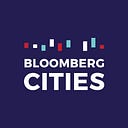Chicago leads a data-driven revolution
Cities around the world routinely make data available online — along with thinking about how to best use that information in new ways. But in 2013, when Chicago won the Bloomberg Philanthropies Mayors Challenge for its plan to combine data from across departments to create its predictive SmartData Platform, that idea was at the vanguard.
“At the time, even open data was a new concept, only a couple of cities had open data portals,” said Tom Schenk, Chief Data Officer for the City of Chicago. “Certainly, the concept of applied data science living within cities was very new — only a couple of cities had chief data officers.”
Now, four years later, Chicago has proven the value of data analytics for cities — and is now helping other cities learn from its experience, helping bolster the global movement toward data-driven management.
New data-driven solutions for old problems
Chicago’s Department of Innovation and Technology saw the potential for data science to benefit the lives of residents early on. One of its first projects focused on improving rodent control. By analyzing data from across different city departments, the city found that it could predict future rat outbreaks based on water-main breaks and 311 calls involving garbage, empowering the city to preemptively address rodent problems before they happened.
The city also has developed an algorithm to predict the restaurants that are most likely violate health code. The formula, which — among other factors — looks at the time since a restaurant’s last inspection and nearby garbage complaints, now helps the city prioritize restaurants for inspection and identify violators a full week earlier than before.
One of the keys to Chicago’s success has been the strong relationship between the Department of Innovation and Technology and other city agencies, Schenk said. In fact, working with other departments to identify problems results in most of the team’s projects.
“We understand statistics and how to leverage data very well,” he said. “But to really make an impact on the city’s challenges and connect them to data analytics, we need to work closely with the other departments to create real and lasting solutions.”
Spreading innovation
Chicago has done more than pioneer the use of data analytics in cities; it’s also helping other cities in very tangible ways. All of Chicago’s SmartData code is open source, meaning that anyone can copy the city’s work for free. Plus, Chicago has partnered with Amazon Web Services to package its OpenGrid platform as an app, making it even easier for other cities to replicate. Other local governments that have already leveraged Chicago’s SmartData work include Denver; Raleigh, N.C.; Syracuse, N.Y.; and Montgomery County, Md.
For cities seeking additional help, “We’ve partnered with a local start-up to provide user support through phone and email,” Schenk said. “Providing technical assistance isn’t something that the City of Chicago can do since we do don’t have the bandwidth. But we’ve really thought about how to distribute this information by providing very low-cost support or making it possible for cities to move forward without any support at all.”
Next steps
Chicago continues to push ahead and seek new ways to use city data to benefit residents. As cities across the country face fears around mosquito-borne Zika and West Nile viruses, Chicago this summer is piloting a new predictive model to determine where the West Nile Virus is most likely to occur, enabling the city to prioritize areas for mosquito control.
“We want to protect Chicagoans and our visitors,” Schenk said. “The model that we’ve created will allow us to get ahead of the problem and reduce the amount of testing we’ll have to do. Also, if the City of Chicago ever needs to deal with Zika, we’ll be able to use this model for that, too.”
